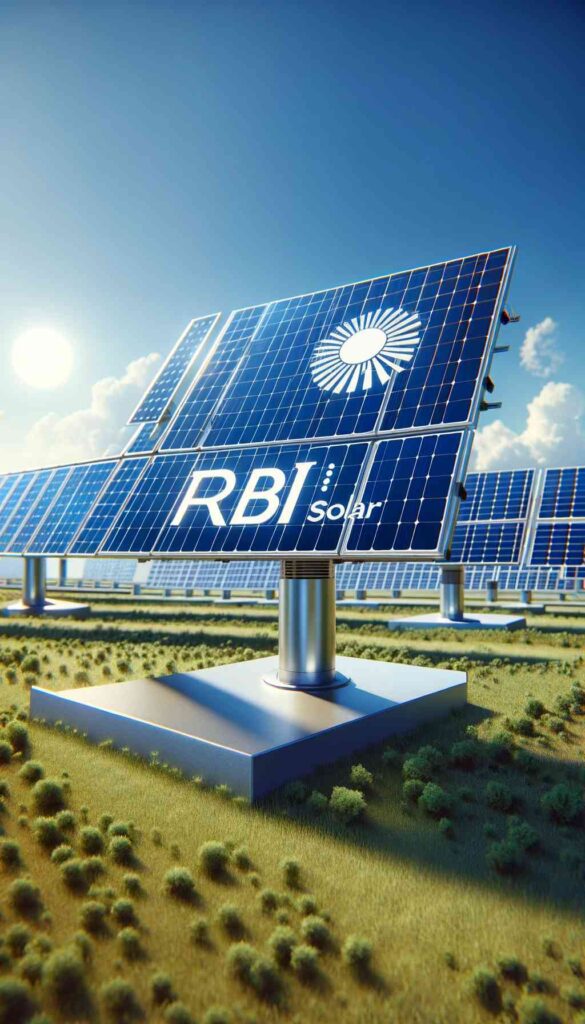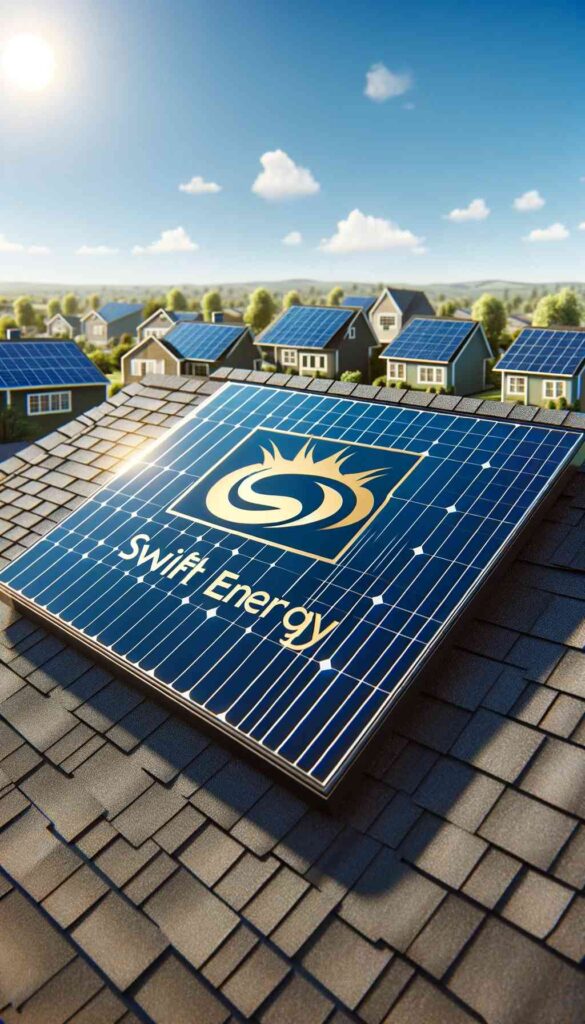
Key Takeaways
- Solar power significantly reduces greenhouse gas emissions, helping to combat climate change.
- Installing solar panels at home can save you money on energy bills and increase your property’s value.
- Solar energy reduces our dependence on finite fossil fuels, promoting sustainability.
- Utilizing solar power conserves water resources, unlike traditional power generation.
- Community involvement in solar projects can accelerate the transition to renewable energy.
Solar Power and Environmental Impact: A Greener Future
In today’s world, where environmental challenges are on everyone’s mind, solar power shines as a beacon of hope for a greener future. As we deal with the realities of climate change and pollution, embracing renewable energy sources like solar power has never been more important. By adopting solar power, we can each do our part to create a cleaner, more sustainable world for future generations.
Early Benefits of Solar Adoption
Switching to solar power has many great perks. One of the biggest is cutting down on greenhouse gas emissions. Using the sun’s energy means less reliance on fossil fuels, which are a major source of pollution and climate change. Installing solar panels helps create a cleaner environment, which is something we should all prioritize.
Another awesome benefit is saving money. Once your solar panels are set up, they generate electricity from the sun, leading to lower electricity bills. Over time, these savings add up and protect you from rising energy costs.
Plus, solar energy is renewable and won’t run out. Unlike coal or natural gas, the sun provides an endless supply of energy. This makes solar power a sustainable choice, ensuring future generations have access to clean energy.
Reduction in Greenhouse Gas Emissions
Solar power plays a vital role in reducing greenhouse gas emissions. Traditional electricity generation relies heavily on burning fossil fuels, which releases carbon dioxide (CO2) into the atmosphere. CO2 is a greenhouse gas that traps heat and contributes to global warming. By using solar energy, we can significantly cut down on these emissions.
For example, in California, solar power offset more than 14 million metric tons of CO2 in 2017 alone. This is equivalent to removing three million cars from the road for a year. Imagine the impact if more people adopted solar power. The reduction in emissions would be monumental, helping to slow down climate change and its devastating effects.

Harnessing Solar Energy for Environmental Benefits
Harnessing solar energy has many environmental benefits, making it a great alternative to traditional power sources. By using the sun’s energy, solar panels produce clean electricity and reduce our reliance on fossil fuels. This helps cut greenhouse gas emissions and preserve natural resources, promoting a healthier planet. Let’s explore how solar energy contributes to a more sustainable world.
How Solar Panels Generate Clean Energy
Solar panels generate clean energy by converting sunlight into electricity. They are made up of photovoltaic (PV) cells, which capture sunlight and convert it into direct current (DC) electricity. An inverter then transforms this DC electricity into alternating current (AC), which powers our homes and devices.
The process is simple yet incredibly effective. When sunlight hits the PV cells, it knocks electrons loose, creating an electric current. This process produces no emissions, making solar energy a clean and environmentally friendly option. It’s a straightforward way to reduce our carbon footprint and protect the planet.
Advantages of Switching to Renewable Sources
Switching to renewable energy sources like solar power offers numerous advantages. First, it reduces our dependence on finite resources such as coal and natural gas. These resources are not only limited but also harmful to extract and use. By opting for solar energy, we tap into an abundant and sustainable power source.
Solar power can also lead to energy independence. When you generate your own electricity, you’re less reliant on the grid and external energy providers. This independence can be especially beneficial during power outages or natural disasters when traditional energy sources may be unavailable.
Besides energy independence, using renewable energy can boost the local economy. The solar industry is growing rapidly, creating jobs and opportunities for communities. By supporting solar energy, you’re contributing to economic growth while promoting environmental sustainability.
Role of Solar Energy in Combatting Climate Change
Solar energy is a powerful tool in the fight against climate change. As we’ve discussed, it significantly reduces greenhouse gas emissions, which are a primary driver of global warming. By transitioning to solar power, we can mitigate the effects of climate change and protect the environment for future generations.
Solar energy promotes a shift away from fossil fuels, which are a major source of pollution. This shift is important in reducing air and water pollution, preserving ecosystems, and maintaining biodiversity. Solar power offers a cleaner, greener alternative that can help us achieve a more sustainable future.

Environmental Benefits Beyond Carbon Reduction
Solar power offers a range of environmental benefits beyond just reducing carbon emissions. By switching to solar energy, we also improve air quality, conserve water, and reduce habitat destruction from fossil fuel extraction.
Contribution to Cleaner Air Quality
Solar panels significantly improve air quality by generating clean, emission-free electricity. Unlike fossil fuels, solar energy doesn’t release harmful pollutants, reducing carbon dioxide, sulfur dioxide, and particulate matter in the air. This leads to fewer respiratory problems and other health issues. As more homes and businesses adopt solar power, we can enjoy cleaner, healthier air for everyone.
Water Conservation and Solar Energy
One of the lesser-known benefits of solar energy is its role in water conservation. Traditional power generation, particularly from fossil fuels and nuclear energy, requires vast amounts of water for cooling and processing. In contrast, solar panels generate electricity without the need for water, making them an excellent choice for water-scarce regions.
By reducing the demand for water-intensive power sources, solar energy helps conserve this precious resource. This is especially important as climate change and population growth increase water scarcity in many parts of the world. Implementing solar power can ease the pressure on water supplies, ensuring that more water is available for essential uses like agriculture and drinking.
Preservation of Natural Resources
Solar power also contributes to the preservation of natural resources. Unlike fossil fuels, which require extensive mining and drilling, solar energy harnesses the sun’s rays, which are abundant and free. This means less disruption to natural landscapes and habitats, helping to protect biodiversity and ecosystems.
By reducing our reliance on finite resources like coal and oil, solar energy helps minimize the environmental damage associated with their extraction and use. This preservation of natural resources is crucial for maintaining a healthy planet and ensuring that future generations have access to the energy they need.
Addressing Solar Power Challenges
While solar power offers numerous environmental benefits, it also presents some challenges that need to be addressed. For instance, the production and disposal of solar panels can have environmental impacts if not managed responsibly. However, innovations and best practices are continually emerging to mitigate these concerns.
Impact on Land Use and Solutions
One challenge of solar power is its impact on land use. Large-scale solar farms require significant land areas, which can lead to habitat disruption and land-use conflicts. However, there are solutions to this issue. For example, solar panels can be installed on rooftops, parking lots, and other built environments, minimizing the need for additional land.
Another innovative solution is agrivoltaics, where solar panels are integrated into agricultural lands. This approach allows for dual land use, combining energy generation with crop production. It not only optimizes land use but also provides shade for crops, which can be beneficial in hot climates.
Community solar projects are also gaining popularity. These projects involve shared solar installations that provide power to multiple households or businesses. They offer a way to generate solar energy without requiring individual installations, making solar power more accessible and reducing land-use impacts.
Waste Management and Recycling Considerations
The disposal of solar panels at the end of their lifespan is another concern. Solar panels contain materials like silicon, glass, and metals, which can pose environmental risks if not properly recycled. However, recycling technologies and programs are improving, making it possible to recover and reuse these materials.
Many solar manufacturers are now taking responsibility for their products by offering recycling services. By supporting companies that prioritize recycling, consumers can help ensure that solar panels are disposed of sustainably. It’s essential to advocate for policies and programs that promote solar panel recycling to minimize environmental impact.
Innovations to Mitigate Environmental Concerns
Innovations in solar technology are continually emerging to address environmental concerns. For example, researchers are developing more efficient solar cells that require fewer materials and produce less waste. These advancements make solar power even more sustainable and environmentally friendly.
New materials are also being explored to replace traditional solar panel components. For instance, organic solar cells made from carbon-based materials offer a more environmentally benign alternative. As these technologies advance, they promise to reduce the environmental footprint of solar power even further.

Future of Solar Energy in Sustainable Development
Solar energy is poised to play a significant role in sustainable development. As technology advances and costs continue to decrease, solar power becomes more accessible and attractive for individuals, businesses, and governments worldwide. This widespread adoption is essential for achieving global sustainability goals.
Breakthroughs in Solar Technology
Recent breakthroughs in solar technology are driving the industry forward. For example, perovskite solar cells have emerged as a promising alternative to traditional silicon-based cells. They offer high efficiency and can be produced at a lower cost, making solar energy more affordable.
Another exciting development is the advent of solar panels that can generate electricity even in low-light conditions. These panels are particularly beneficial in regions with less sunlight, expanding the potential for solar energy adoption. As these technologies continue to evolve, they will further enhance the viability and impact of solar power.
Global Adoption and Future Trends
The global adoption of solar energy is on the rise, with countries around the world investing in solar infrastructure. This trend is driven by the urgent need to reduce carbon emissions and transition to renewable energy sources. Governments are implementing policies and incentives to encourage solar adoption, further accelerating its growth.
In the future, we can expect to see continued advancements in solar technology, making it even more efficient and cost-effective. As more people and businesses switch to solar power, the cumulative environmental benefits will be significant, contributing to a more sustainable and resilient planet.
Taking Action: How You Can Support Solar Energy
Supporting solar energy is a powerful way to contribute to a greener future. There are several steps you can take to promote solar power and its environmental benefits.
Steps to Implement Solar Power at Home
Installing solar power at home is a great way to reduce your carbon footprint and save on energy bills.
- Assess your energy needs and determine how much solar power you require. Consider factors like your average electricity consumption and the size of your roof or available space for solar panels.
- Research and select a reputable solar provider. Look for companies with good reviews and solid warranties. Once you’ve chosen a provider, they will conduct a site assessment to determine the best setup for your home. They’ll also help you navigate any necessary permits and approvals.
- After installation, monitor your solar system’s performance to ensure it’s working efficiently. Many systems come with monitoring apps that allow you to track energy production and usage. Regular maintenance, like cleaning the panels and checking for any issues, will keep your system running smoothly.
Community Involvement in Renewable Energy Projects
Community involvement is important for expanding solar energy adoption. By participating in local renewable energy projects, you can help drive the transition to cleaner energy sources. Start by joining or forming a community solar group. These groups pool resources to install shared solar systems, making solar power accessible to more people.
Another way to get involved is by advocating for solar initiatives in your area. Attend town hall meetings, engage with local policymakers, and support policies that promote renewable energy. By raising awareness and encouraging others to adopt solar power, you contribute to a broader movement towards sustainability.
Advocating for Policy Changes
Advocating for policy changes is essential to support the growth of solar energy. Policies can influence the adoption and affordability of solar power. Contact your local representatives and express your support for renewable energy incentives and programs.
Encourage the implementation of tax credits, rebates, and grants for solar installations. These incentives can make solar power more accessible and affordable for individuals and businesses. Support policies that promote research and development in solar technology, ensuring continuous advancements and improvements.
Engage with organizations and advocacy groups that focus on renewable energy. By joining forces, you can amplify your voice and work towards creating a favorable policy environment for solar power.

Frequently Asked Questions
How do solar panels work?
Solar panels work by converting sunlight into electricity. They contain photovoltaic (PV) cells, which capture sunlight and generate direct current (DC) electricity. An inverter then converts this DC electricity into alternating current (AC), which powers your home and appliances.
Are there any harmful chemicals in solar panels?
Solar panels are generally safe and environmentally friendly. However, they do contain some materials like silicon, glass, and metals. While these materials are not harmful during the panels’ operational life, it’s important to recycle them properly at the end of their lifespan to minimize environmental impact.
What is the lifespan of a typical solar panel?
A typical solar panel has a lifespan of 25 to 30 years. Over this period, the panels will gradually become less efficient, but they will still produce electricity. Regular maintenance and cleaning can help extend their lifespan and ensure optimal performance.
How does solar energy save water compared to other energy sources?
Solar energy saves water because it doesn’t require water for electricity generation. Traditional power plants, especially those that use fossil fuels or nuclear energy, need large amounts of water for cooling and processing. By using solar panels, we reduce the demand for water-intensive power sources, helping to conserve water resources.
Can I install solar panels myself?
While it’s possible to install solar panels yourself, it’s recommended to hire a professional installer. Solar installations require technical expertise to ensure they are set up correctly and safely. A professional installer will handle permits, electrical connections, and system optimization, ensuring that your solar power system operates efficiently.


